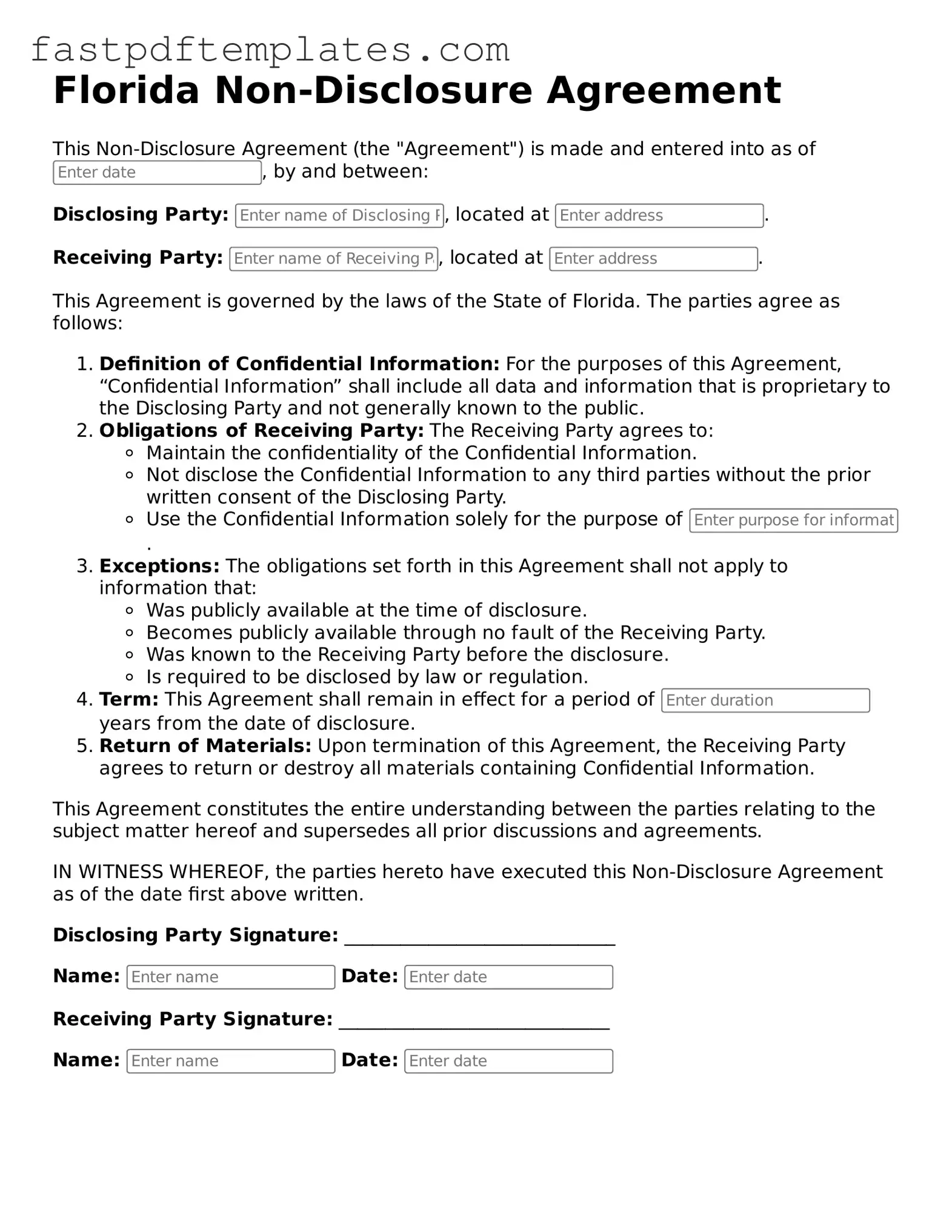Attorney-Approved Florida Non-disclosure Agreement Document
A Florida Non-disclosure Agreement (NDA) is a legal contract designed to protect confidential information shared between parties. This form ensures that sensitive data remains private and outlines the obligations of each party regarding the use and disclosure of that information. Understanding the components of an NDA is crucial for anyone looking to safeguard their business interests in Florida.
Access Document
